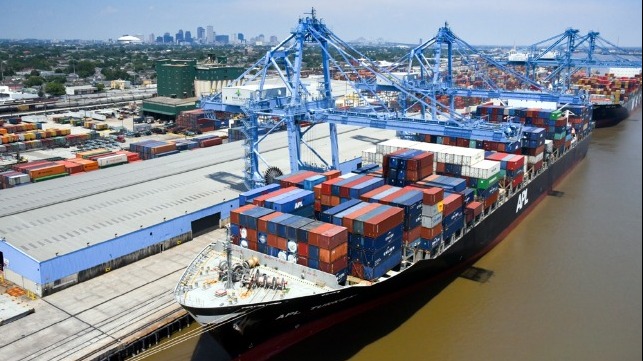Louisiana to Develop Innovative Management Tools for its Ports

A new initiative was announced to develop an innovative port management tool to improve the operating efficiency and reduce lost time at the Port of New Orleans as well as developing a smart port facility at Baton Rouge, Louisiana. The Port of New Orleans, Louisiana Economic Development, and The Water Institute of the Gulf will work together developing a decision support tool to forecast shoaling at port facilities along the Mississippi River.
“We are excited to announce the smart port initiative of LED, the Water Institute of the Gulf, and the Port of New Orleans, which will serve as a model for the future of maritime commerce in Louisiana,” said Governor John Bel Edwards. “This project will provide better protection of our ports against threats and disruptions. It also will streamline operations for the port, its tenants, and transportation partners. I’m proud of our joint efforts to raise the bar for emergency management, safety, and innovation in Louisiana.”
According to the partners, this work will greatly reduce financial and operational uncertainty related to downtime at berths where shoaling prohibits vessel access as well as predicting future dredging needs. Part of the novelty of this forecasting tool is that it will use near real-time data provided by existing sensors aboard tugboats and other vessels that work in the port and surrounding area to provide information about Mississippi River sediment movement and deposition.
“We want to thank Governor Edwards, Louisiana Economic Development, and The Water Institute of the Gulf for their vision and partnership in making this smart port initiative a reality,” said Brandy D. Christian, Port of New Orleans President and CEO. “As Louisiana’s international container port, Port NOLA is honored to participate in this innovative effort that boosts Louisiana’s maritime industry and competitiveness in global commerce. This collaborative endeavor is good news for all the Lower Mississippi River ports that rely on safe and efficient navigation of our working river.”
Thie crowd-sourced information from the tug fleet can be used in predictive models that will help the Port of New Orleans anticipate dredging needs so that they can continue to provide safe and economically optimal berthing for commercial vessels. Because this methodology will rely on the existing vessel sensors, it is scalable to other riverine ports in Louisiana and beyond, strengthening the stability of these vital components of our state’s economy. The information can also be fed back to Louisiana’s Coastal Protection and Restoration Authority to improve Mississippi River sediment management.
“Louisiana’s Lower Mississippi River ports make up the most significant maritime complex in the world,” LED Secretary Don Pierson said. “Beginning with New Orleans, we plan to make our ports safer and more efficient through a digitally connected infrastructure. Smart ports mean more efficient operations for all businesses, and they also provide security against virtual and physical threats. With the Water Institute’s expertise, we can design a smarter infrastructure that befits our world-class port system.”
This effort will also support the creation of a “Smart Port” facility at The Water Campus in Baton Rouge, through collaboration with The Water Institute of the Gulf with the support from Louisiana Economic Development. This “Smart Port” facility will use artificial intelligence platforms to optimize the port’s performance. The “Smart Port” facility will allow for a redundancy of services, essential in an area prone to hurricanes and storms.

that matters most
Get the latest maritime news delivered to your inbox daily.
Also digitally connecting a community of container depots, road transporters, terminals, shipping lines, warehouses, and cargo owners, can deliver predictability and coordination across the supply chain. Although the initial effort will focus on the Port of New Orleans, it will provide a replicable model for other ports in Louisiana and beyond.
“Through this collaboration, we will develop innovative ways to help the Port of New Orleans operate even more effectively,” said Justin Ehrenwerth, Institute president and CEO. “Dynamic water levels, sedimentation, and reduced visibility are major challenges for ports all along the Mississippi River. Leveraging existing technology and developing new predictive tools will allow us to address some of the most pressing challenges facing ports in Louisiana and around the nation.”
